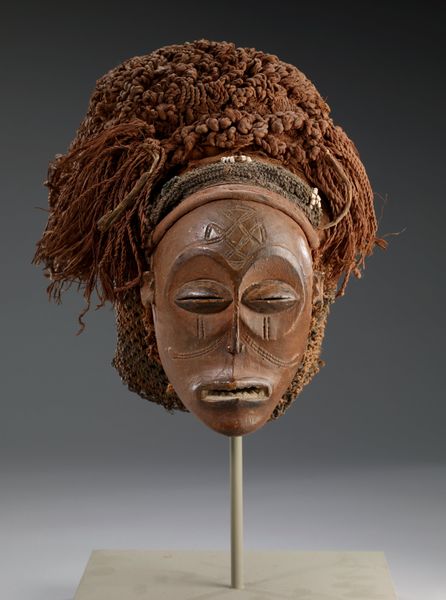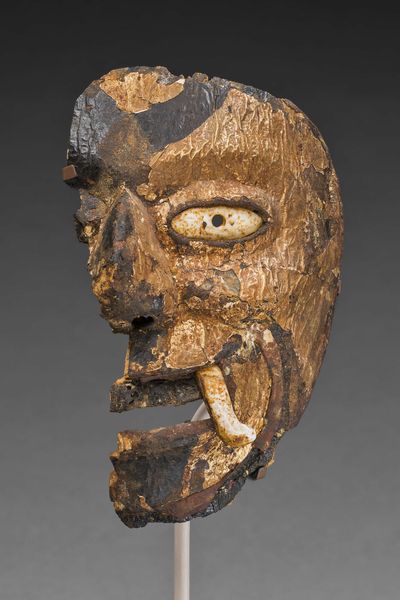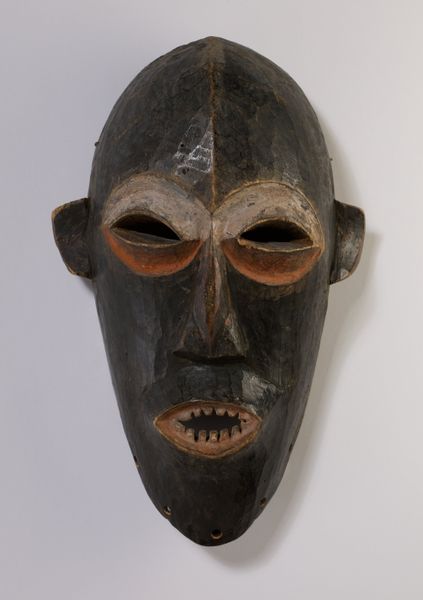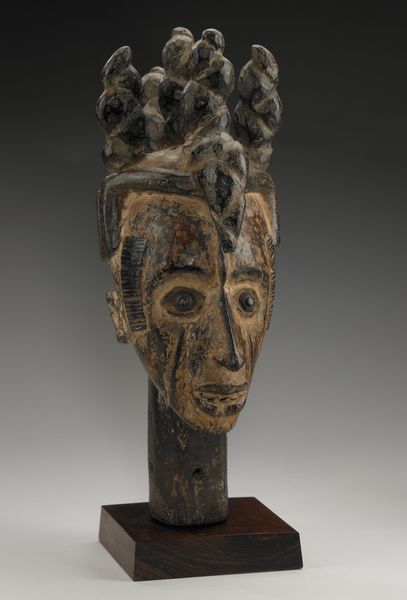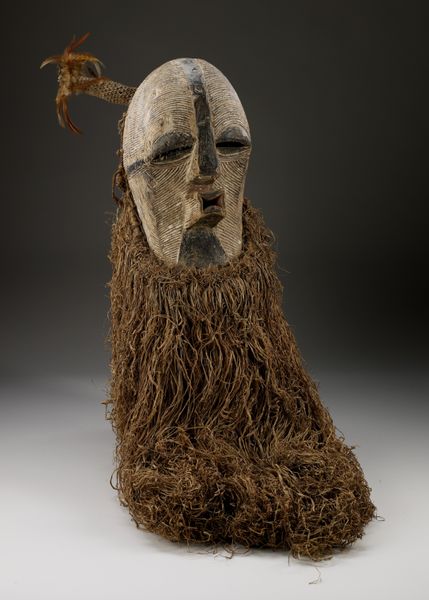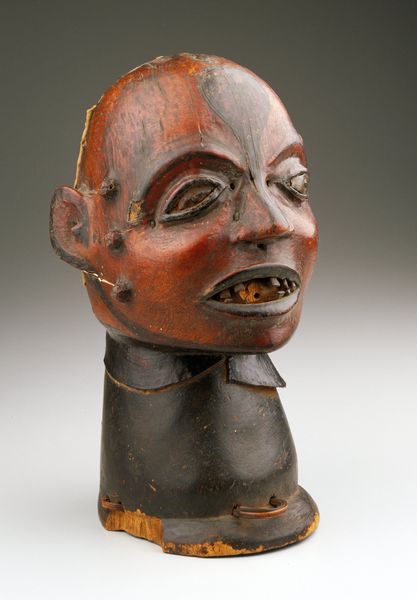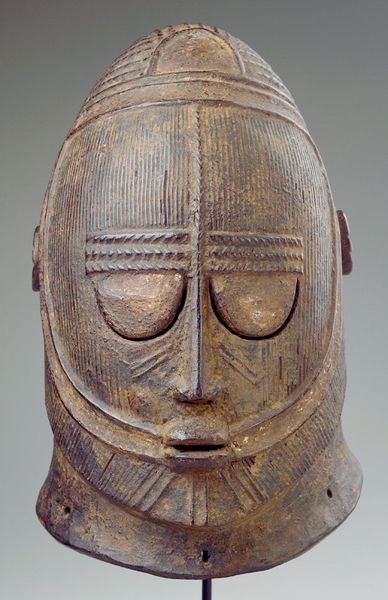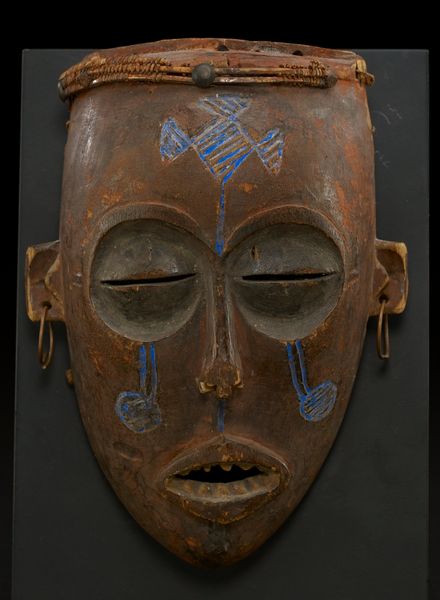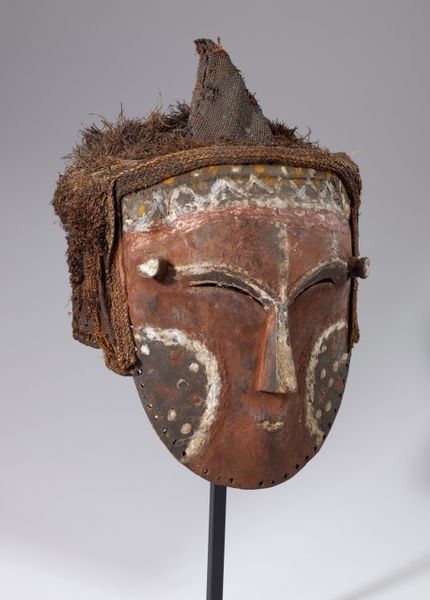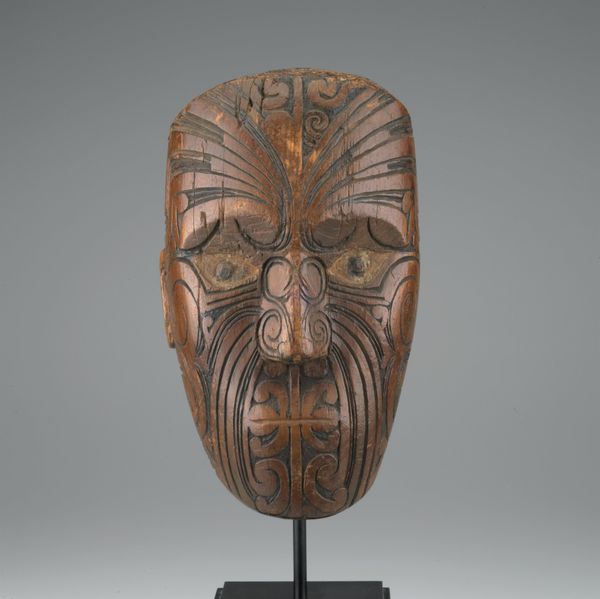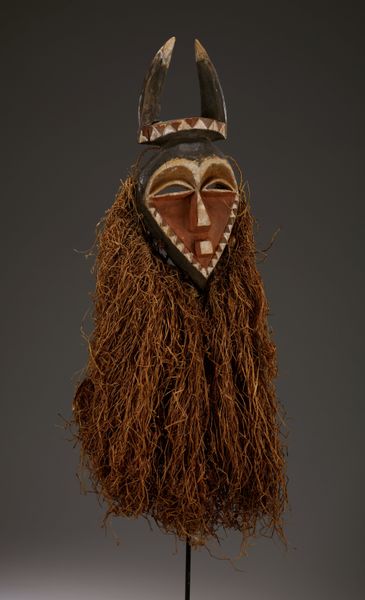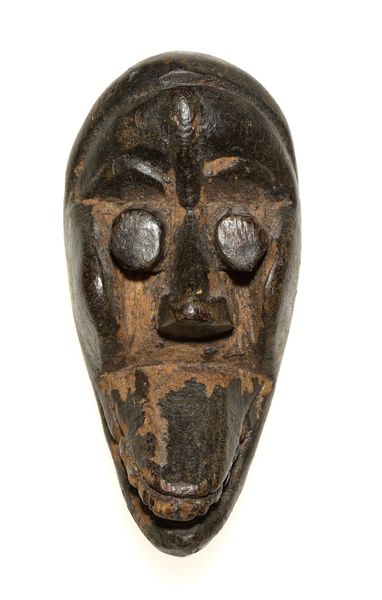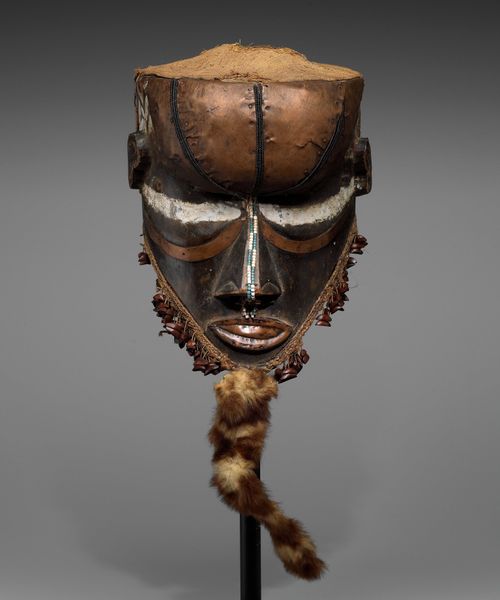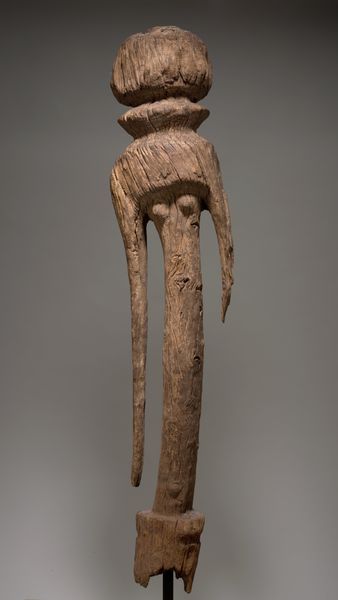
sculpture, wood
#
portrait
#
african-art
#
sculpture
#
figuration
#
sculpture
#
wood
Dimensions: 9 x 6 1/8 x 4 1/4 in. (22.9 x 15.6 x 10.8 cm)
Copyright: Public Domain
Editor: We're looking at "Mwana Pwo Mask," a wooden sculpture from around the 20th century, created by the Chokwe people. I’m struck by the serenity of its face and the contrast between the smooth, dark wood and the rough, lighter-toned fiber. What do you see in this piece that a casual observer might miss? Curator: Primarily, I observe the meticulous articulation of form. Notice the subtly modeled planes of the face. The sculptor employed an almost minimalist approach, distilling the features to essential shapes – the brow line, the gently closed eyes, the slightly parted lips. Editor: It feels very intentional, this simplification. Curator: Precisely. It is through these reductions that the work attains its power. The dots on the forehead, cheeks, and bridge of the nose aren't merely decorative. They create a geometric framework that emphasizes the underlying structure. What does this structure remind you of? Editor: Perhaps an underlying symmetry, but one that's not rigid. The slight asymmetries, especially around the mouth, give it character. Curator: An insightful observation. Those slight deviations introduce a vital tension, preventing the mask from becoming merely a decorative object. The texture of the fiber headdress also is a key structural contrast. Its coarse, porous quality juxtaposes with the polished wood, drawing attention to their respective material qualities. Editor: I see now how attending to its formal properties brings forward insights about its aesthetic. Curator: Indeed. Form is not merely a superficial concern; it is the vehicle through which meaning is conveyed. Considering elements such as balance and tension within its construction is key to understanding it. Editor: Thanks! It reframes the piece into a new arrangement of shapes and intentions.
Comments
minneapolisinstituteofart almost 2 years ago
⋮
The Mwana Pwo (young woman) mask represents the female ancestor of the Chokwe people. It embodies ideal feminine beauty and records traditional Chokwe facial scarification patterns. The Mwana Pwo mask is always worn by a man who is disguised as a woman with a bodysuit, false breasts and a cotton skirt. In dances performed for the ruler and the entire community, Mwana Pwo is sometimes accompanied by the male ancestor mask, Cihongo. Cihongo symbolizes authority and wealth; Mwana Pwo symbolizes generative power. During the performance, the Mwana Pwo dancer mimics and exaggerates the mannerisms of young Chokwe women.
Join the conversation
Join millions of artists and users on Artera today and experience the ultimate creative platform.
